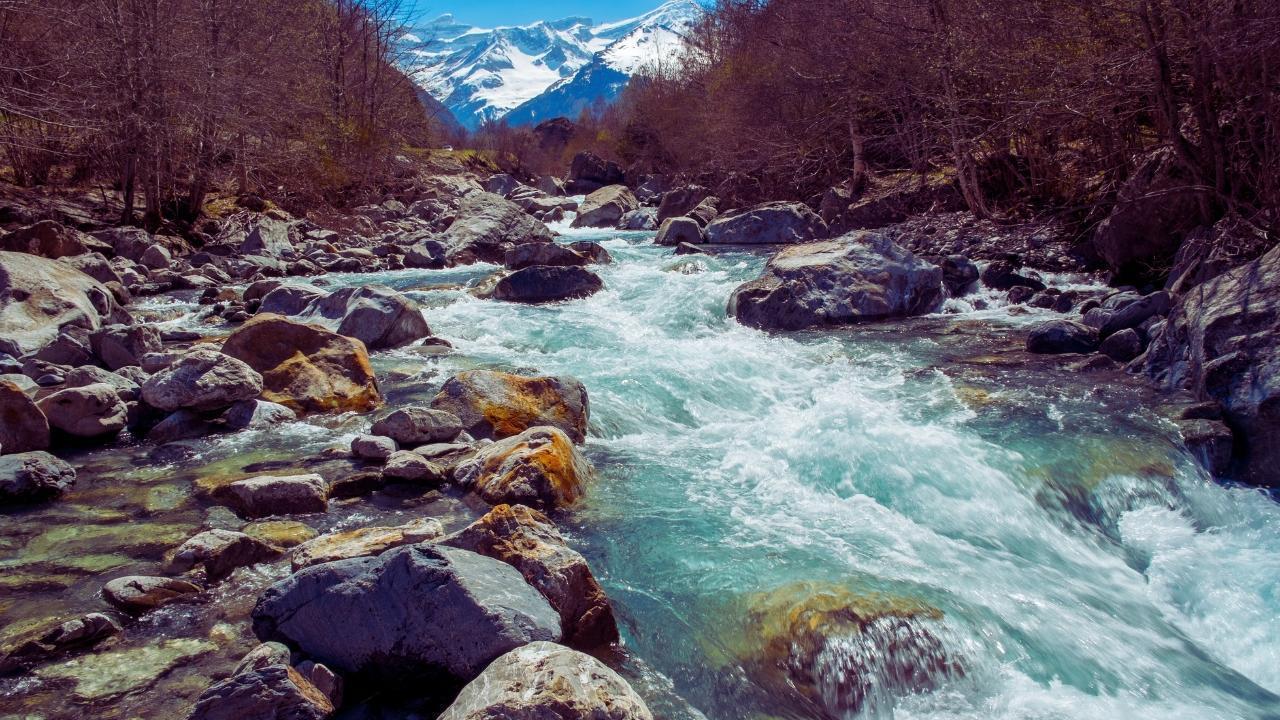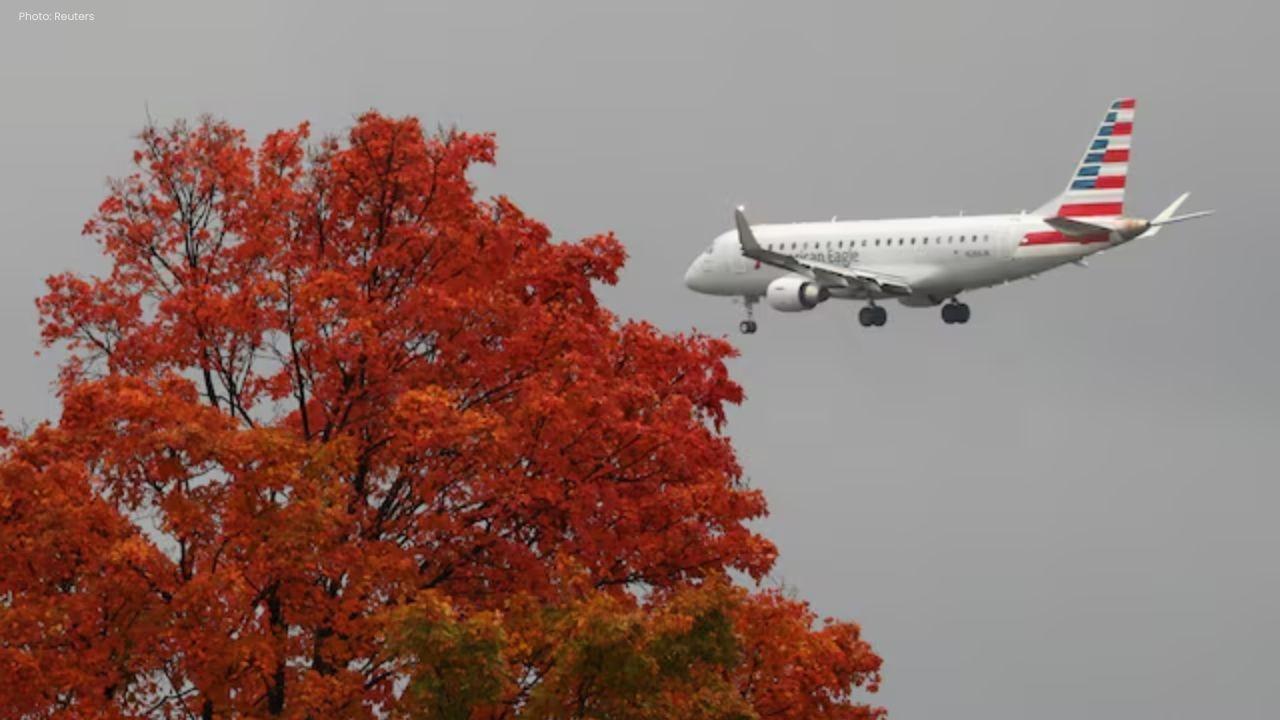
Join 10k+ people to get notified about new posts, news and tips.
Do not worry we don't spam!

Post by : Anis Farhan
Asia’s rivers have always been its lifeblood—nourishing civilizations, sustaining agriculture, and shaping identities. But in 2025, a silent crisis is unfolding. The continent’s great water arteries—the Ganges, Yangtze, Indus, Irrawaddy, and Mekong—are shrinking, silting, drying, or turning dangerously polluted. As climate change collides with over-extraction, damming, and pollution, the very rivers that sustain more than 2 billion people are beginning to disappear.
Unlike fast-moving disasters like floods or earthquakes, this one is creeping—slow, systemic, and largely invisible in mainstream headlines. Yet its consequences may dwarf them all.
What’s at stake? Water security, food supply, migration, geopolitics, and even peace. In short, the drying of Asia’s rivers isn’t just an environmental issue—it’s a human crisis in slow motion.
Stretching 4,350 km across six countries, the Mekong River is a lifeline for over 60 million people. But today, parts of it are drying up—its once-mighty pulse reduced to sluggish trickles during the dry season.
The causes are multiple:
Climate change is delaying monsoons and shrinking snowcaps in the Tibetan Plateau.
Upstream damming, particularly in China and Laos, is disrupting natural flows.
Sand mining and irrigation projects have altered riverbeds and weakened ecosystems.
In Cambodia and Vietnam, once-thriving fisheries are collapsing. Tonle Sap Lake, fed by the Mekong, has seen fish stocks plummet by more than 60% since 2010. Farmers now face saline water creeping into rice fields as sea levels rise and freshwater flows dwindle.
And the most worrying part? The Mekong is a preview of what’s coming elsewhere.
India is home to some of the most revered rivers in the world—yet half of them are polluted beyond recovery, and many are shrinking due to overuse, deforestation, and erratic rainfall.
The Ganges, sacred and central to over 500 million lives, is battling a toxic mix of industrial waste, sewage, and reduced glacial melt. Despite cleanup efforts like the Namami Gange program, the river remains one of the most polluted in the world.
In the north, the Yamuna is nearly dead by the time it reaches Delhi—choked with chemical froth and untreated waste.
In the south, rivers like the Cauvery and Godavari are becoming seasonal. Once perennial, they now dry up for months, sparking inter-state water disputes and threatening agricultural belts in Tamil Nadu and Karnataka.
India’s water demand is projected to double by 2030, while river flows are expected to decrease by 20% due to climate impacts. The result? A future of water rationing, crop failures, and urban water wars.
Often called the "Third Pole", the Tibetan Plateau is the source of ten of Asia’s major rivers. But its glaciers—feeding rivers like the Brahmaputra, Mekong, Yangtze, and Indus—are melting faster than anywhere else in the world.
In 2025, new satellite data shows that over 30% of Himalayan glaciers could vanish by 2050, disrupting water flows for nearly 1.9 billion people downstream.
What happens when Asia’s water tower dries up? Rivers become erratic—flooding in spring, shrinking in summer, and disappearing in autumn. Hydroelectric projects, agriculture, and human settlements, all finely tuned to river cycles, begin to crumble.
And since many of these rivers cross national borders, water scarcity could easily spill into conflict.
As rivers shrink, water is becoming a geopolitical flashpoint.
India and China are locked in tensions over Brahmaputra river projects. China’s dam-building upstream is raising fears of water flow manipulation.
Vietnam, Cambodia, and Thailand accuse upstream Mekong countries of hoarding water via dams, threatening downstream agriculture.
In South Asia, disputes over the Indus waters between India and Pakistan persist despite treaties, made worse by climate disruptions.
Water diplomacy is now as vital as trade talks. But in many cases, treaties are outdated, built for stable climates and predictable flows—not the volatile new water realities of 2025.
Even when rivers carry water, they often carry poison.
The Citarum River in Indonesia is dubbed one of the world’s dirtiest—choked with plastic, industrial sludge, and untreated sewage.
Bangladesh’s Buriganga River, once vital to Dhaka, is now a black, toxic stream.
China’s smaller tributaries, despite improvements in major river cleanups, still suffer from heavy metals, pharmaceutical runoff, and factory waste.
These aren’t isolated stories. In Asia’s rush to industrialize, rivers became dumping grounds. Cleanup efforts exist, but enforcement is patchy, and corporations often find ways to evade environmental accountability.
The result? Entire communities drinking contaminated water, rising rates of cancer and kidney disease, and rivers that no longer support aquatic life.
Agriculture consumes nearly 80% of freshwater in Asia, and much of it comes from rivers.
But over-extraction is bleeding rivers dry:
In India, paddy and sugarcane cultivation is sucking rivers like the Godavari and Krishna.
In Pakistan, excessive irrigation is depleting the Indus River, leaving little for downstream towns.
In China, river diversions have drastically reduced the Yellow River’s flow, with some stretches drying up completely.
As rainfall patterns grow erratic and groundwater reserves deplete, farmers are doubling down on river water—often with short-term gain but long-term collapse.
Without serious reforms in irrigation efficiency, crop selection, and pricing incentives, rivers will continue to bear the burden—until they break.
It’s easy to talk numbers. But the victims of Asia’s disappearing rivers are real people:
Fisherfolk in the Mekong Delta who can’t catch enough to survive.
Farmers in Uttar Pradesh facing crop failure due to irregular canal supplies.
Children in Jakarta or Lahore falling ill from polluted river water.
Women in rural Nepal walking further each year for clean water.
Water scarcity isn’t theoretical—it’s daily life. And if current trends continue, mass migration, urban water riots, and deep social unrest may follow.
Yes—but only with multi-pronged action and urgent political will.
Current agreements need updates to reflect climate uncertainty and ecosystem sustainability. Shared rivers demand shared responsibility.
Reforestation, wetland restoration, and regulated sand mining can revive natural river health and flows.
Switching to less water-intensive crops, improving irrigation efficiency, and promoting rainwater harvesting are critical.
Tougher enforcement, polluter-pays laws, and real-time water quality monitoring are needed—especially for industries near rivers.
Villagers, tribal communities, and farmers are often the best stewards of local rivers. Empowering them with tools, funds, and rights is key.
Asia’s rivers are dying—not in one cataclysmic moment, but drop by drop, day by day. If the continent is to sustain its people, cities, and food systems, this crisis must rise to the top of political and social agendas.
Because in the end, rivers don’t just carry water—they carry life, memory, and motion. And when they vanish, so does a part of who we are.
In 2025, the time to act is not tomorrow. It’s now.
This article is for informational and editorial purposes only. All figures, policies, and projections are based on publicly available environmental reports and regional assessments as of 2025. Readers should consult local authorities or scientific institutions for verified data on river conservation initiatives.










Paramount+ to Stream PBR’s 'Unleash the Beast' in New Five-Year Deal
Paramount+ will stream PBR’s 'Unleash the Beast' across the U.S. starting this December under a five

Zohran Mamdani Clinches NYC Mayoral Seat as Victory Speech Blends Politics and Bollywood
Zohran Mamdani won New York City's mayoral race, becoming the city's first Muslim and South Asian ma

India Wins First Women’s World Cup 2025 Title
India lifts its maiden Women’s World Cup 2025 title! Harmanpreet Kaur’s team stuns South Africa in a

Manuel Frederick, 1972 Olympic Bronze Goalkeeper, Dies at 78
Manuel Frederick, a member of India’s 1972 Olympic bronze hockey team, has died in Bengaluru at 78 a

Muhammad Hamza Raja Wins IFBB Pro Card Puts Pakistan & UAE on Global Stage
Pakistani bodybuilder Muhammad Hamza Raja earns IFBB Pro Card in Czech Republic, showcasing Dubai’s

Shreyas Iyer’s Recovery Underway After Spleen Laceration in Sydney ODI
Shreyas Iyer is recovering after a spleen laceration sustained while taking a catch in the Sydney OD